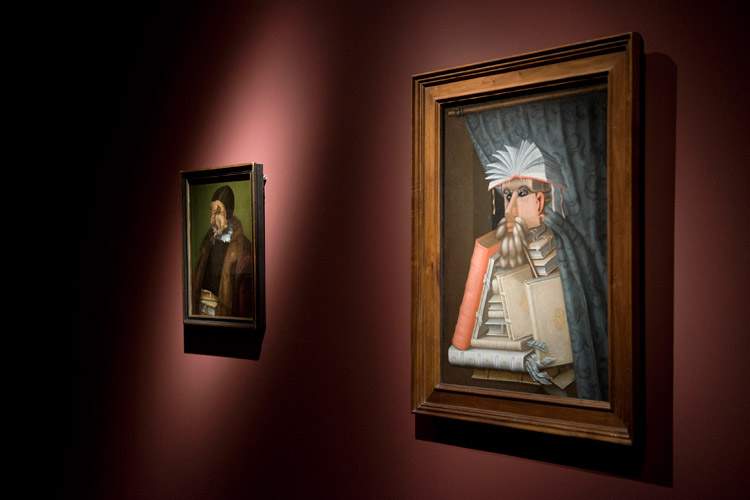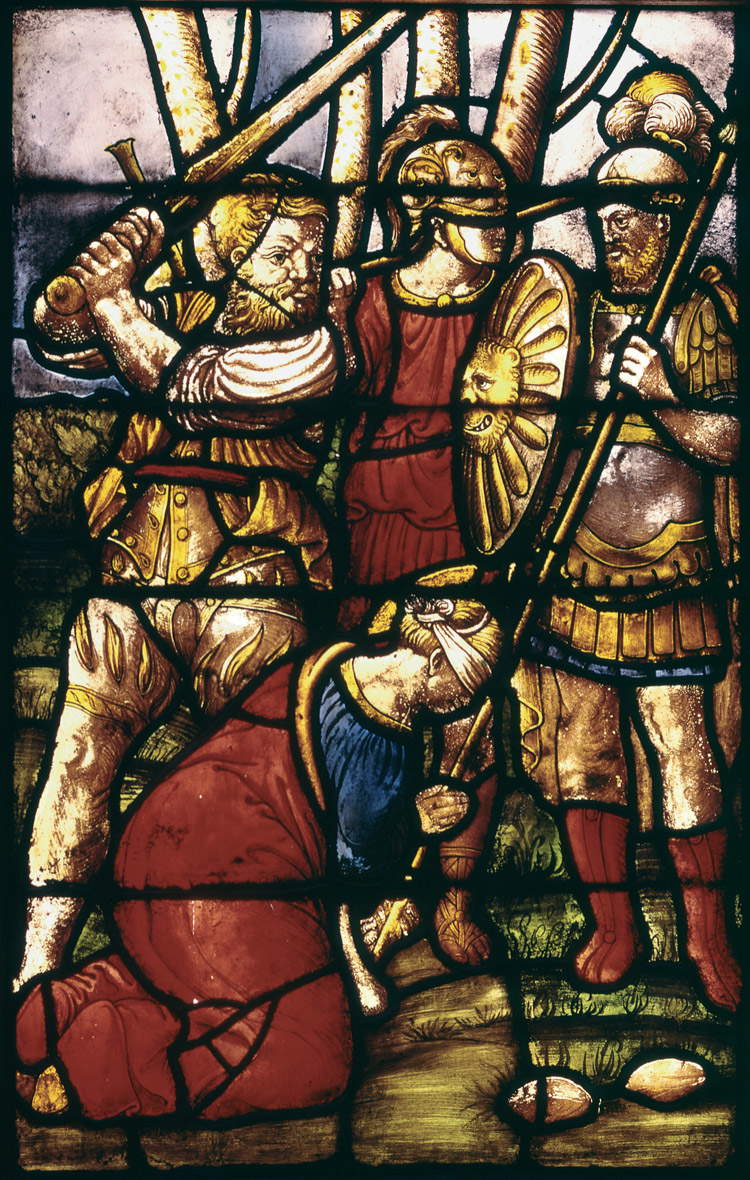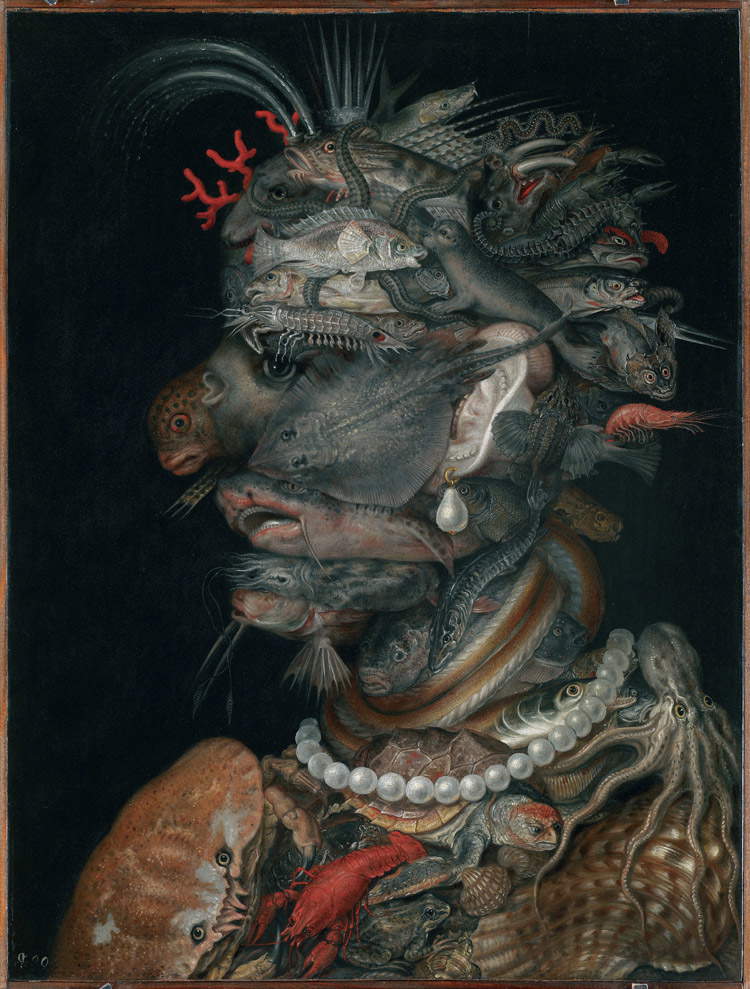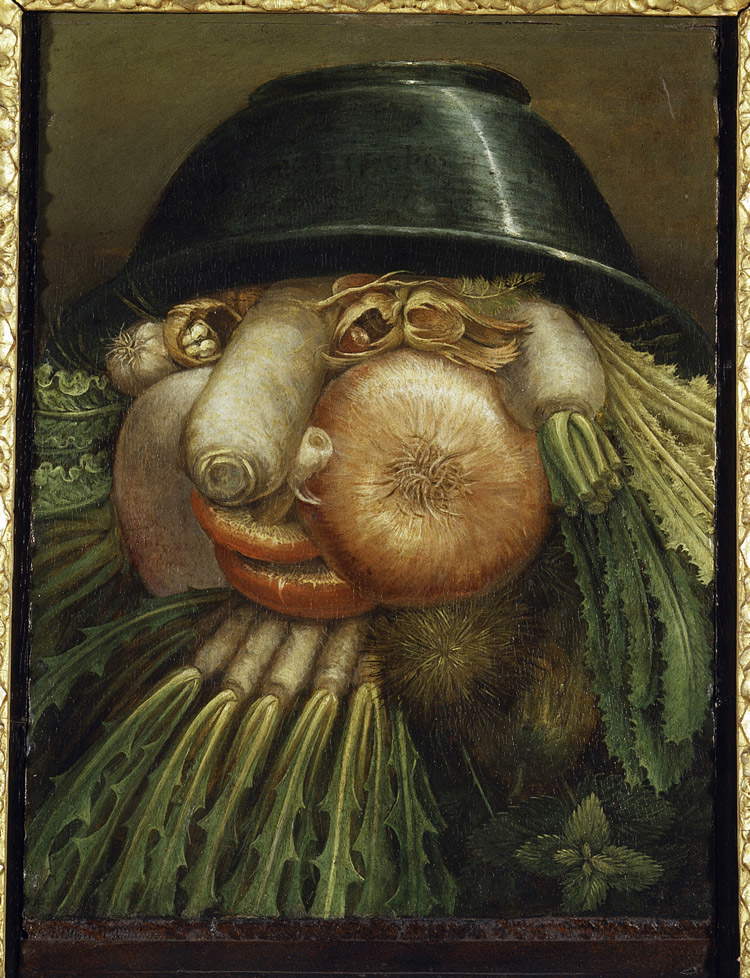by Redazione , published on 20/10/2017
Categories: Exhibitions
/ Disclaimer
In Rome, Palazzo Barberini is hosting the Arcimboldo exhibition until Feb. 11, dedicated to the whimsical genius of Giuseppe Arcimboldi. Here is a selection of works.
The Galleria Nazionale d’Arte Antica of Palazzo Barberini in Rome is hosting, from October 20, 2017 until February 11, 2018, the Arcimboldo exhibition, which displays to the public the works of the great Giuseppe Arcimboldi, also known as Arcimboldo (Milan, 1526 - 1593), famous for his bizarre compositions made of fruits, vegetables and various objects, composed in such a way as to create fantastic portraits: works that are fully influenced by the climate of the most whimsical Mannerism. For the first time, therefore, about twenty autograph masterpieces arrive in Rome, coming from Italian (Milan, Genoa, Cremona, Como) and international (Basel, Vienna, Munich, Stockholm, Denver, Houston) museums. A very special event also because the loaning of Arcimboldi’s works is not a frequent occurrence.
The public will thus be able to admire the Seasons cycle and the Elements cycle, as well as the very famous Hortolanus, the Jurist, the Como tapestry and designs for court festivities, and even the stained glass windows of Milan Cathedral: along with Arcimboldi’s paintings there will also be coeval works, copies such as the celebrated Librarian, objects from the imperial Wunderkammern (the Lombard artist worked for a long time in the Habsburg courts of Vienna and Prague in the service of Emperors Ferdinand I, Maximilian II and Rudolph II, even earning the title Count Palatine, a rare recognition for an artist). The exhibition is divided into six sections, plus an introduction: it starts withSelf-Portrait, which presents the figure of Giuseppe Arcimboldi, then continues with The Milanese Environment, which brings together contemporary works in dialogue with Arcimboldi personifications, and again At Court between Vienna and Prague, which investigates the period at the Habsburg courts. Continuing on, it is the turn of Naturalistic Studies, where the visitor will also find curious objects from Wunderkammeer, we then encounter the section devoted to Reversible Heads (Arcimboldi’s famous still lifes that, when rotated 180 degrees, took on the appearance of human portraits), and end with the fifth section, The Beautiful Compound, dedicated to paradox, and the last one reserved for Ridiculous Paintings: ironic and caricature paintings.
“Arcimboldo is a very well-known painter and at the same time little known,” says the director of the National Galleries of Ancient Art, Flaminia Gennari Sartori. “His works are rare and, of these, very few are preserved in Italy. The exhibition at Palazzo Barberini is the first Roman one ever dedicated to him: through paintings, drawings, books, medals, and objects of all kinds, visitors will be able to travel from Milan to the courts of central Europe in the second half of the 16th century and immerse themselves in a culture that centered on curiosity, the combination of meticulous and scientific observation with play, wonder and irony. In one of his illuminating essays, Roland Barthes in 1978 called Arcimboldo a ”rhétoriqueur et magicien“ highlighting how the Milanese master with his composite portraits engaged with the viewer in a game, a sequence of visual and mental riddles that keep us on our toes by subtly and profoundly changing the way we look at works of art. It is a game that continues to work and is particularly stimulating for us, men and women, of the 21st century, oblivious to the cultural and social mores of the Habsburg courts of the 16th century and perpetually besieged by myriad images that have changed us into weary and distracted observers.”
“We have chosen to host this project,” he concludes, “because the artist Arcimboldo and the way Sylvia Ferino-Pagden has chosen to narrate him on this occasion fit admirably with the path we have taken at the Gallerie Nazionali Barberini Corsini: to invite our audiences to look differently, to play seriously and to discover the art of the past with the eyes of today.”
The exhibition, curated by Sylvia Ferino-Padgen, opens Tuesday through Sunday from 9 a.m. to 7 p.m. Closed Mondays, Dec. 25, Jan. 1. Tickets: full 15 euros, reduced 13 euros, always with audio guide included. With the ticket to enter Palazzo Barberini (full 12 euros, reduced 6) you have the opportunity to enter the exhibition with the special reduced price of 10 euros, audio guide included. Free for under 18, disabled, ICOM members, tour guides with badges, MiBACT employees. Information at www.arcimboldoroma.it. The exhibition hashtag is #arcimboldoroma. Catalog published by Skira. The exhibition is a collaboration between MondoMostre Skira and the National Galleries. Below we offer a selection of some of the works that will be on view at Palazzo Barberini:
 |
| Giuseppe Arcimboldi, Martyrdom of St. Catherine (1556; stained glass panel; Milan, Duomo, stained glass window of St. Catherine of Alexandria) |
 |
| Giuseppe Arcimboldi, The Summer (c. 1555-1560; oil on canvas, 68.1 x 56.5 cm; Munich, Bayerische Staatsgemäldesammlungen) |
 |
| Giuseppe Arcimboldi, The Autumn (1572; oil on canvas, 91.4 x 70.2 cm; Denver, Denver Art Museum, bequest of John Hardy Jones) |
 |
| Giuseppe Arcimboldi, The Water (1566; oil on alder wood, 66.5 x 50.5 cm; Vienna, Kunsthistorisches Museum, Gemäldegalerie) |
 |
| Giuseppe Arcimboldi, The Winter (c. 1555-1560; oil on panel, 67.8 x 56.2 cm; Munich, Bayerische Staatsgemäldesammlungen) |
 |
| Giuseppe Arcimboldi (copy from), The Librarian (oil on canvas, 97 x 71 cm; Sweden, Skokloster Castle) |
 |
| Giuseppe Arcimboldi, The Ortolan (Priapus) / Bowl of Vegetables (c. 1590-1593; oil on panel, 35.8 x 24.2 cm; Cremona, Museo Civico “Ala Ponzone”) |
 |
| The oddities of Giuseppe Arcimboldi on display in Rome: a selection of works |
Warning: the translation into English of the original Italian article was created using automatic tools.
We undertake to review all articles, but we do not guarantee the total absence of inaccuracies in the translation due to the program. You can
find the original by clicking on the ITA button. If you find any mistake,please contact us.







